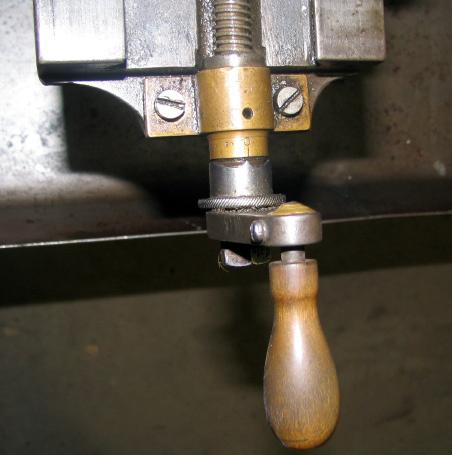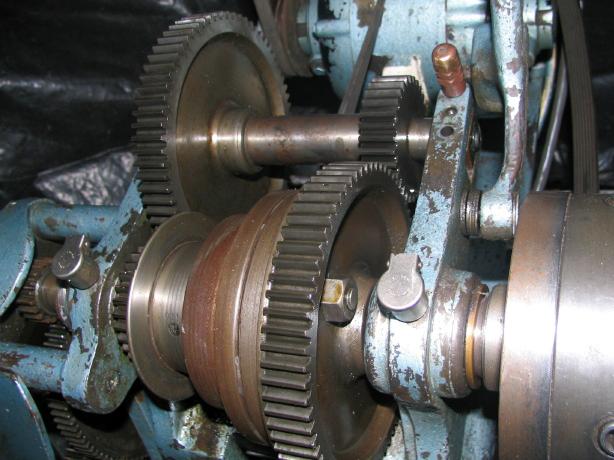Early "double-height bed" Drummond
Drummond Home Page EARLY 3 1/2" Drummond Larger Drummonds Round Bed Drummond
Drummond Home Page Rare 4" Drummond Flat Bed Headstock Comparison Admiralty Model
Still in Use Early Original 31/2" 1912 31/2" B Type Countershaft Details Little Goliath
M-Type Photo Essay Rare early "double-height bed" Model
With a 4-inch centre height and around 22 inches between this is an exciting find - a previously unknown early version of the later 5-inch Drummond "double-height bed" lathe. Carrying a badge of a type not seen on a Drummond before - an oval screwed-on plate - the lathe presents sufficient design and styling clues to guess that it would have been constructed as a development model between 1902 and 1906. Like the other equally-rare 4-inch Drummond of the same era, this lathe is also in Australia, leading further credence to the idea that, when Arthur Drummond visited the county in the early years of the 20th century, he took several lathes, possibly prototypes, with him. Certainly both machines had a distinctly late-Victorian appearance, especially the one shown on this page, where the carriage and compound slide rest could have come from 20 years earlier. Of typically English construction - with flat tops and 60-degree edges to guide both saddle and tailstock - the bed was unusual in separating the duties at two different heights, the upper for the tailstock and the lover for the carriage. The aim of the designer was to provide a very large gap, capable of allowing the saddle to travel, fully supported, right up to the faceplate; there was no gap piece to remove and so no weakening of the bed when turning the largest diameters. Although the resulting gap was indeed deep, there was still little metal left beneath it and, in addition, to further weaken the assembly, the bed tapered in depth as it approached the tailstock end. One element of the Drummond's design that had began to fall out of use by the late 19th century was the method of taking the spindle end thrust on a plate outboard of the left-hand headstock bearing. A serious disadvantage of this system was that most makers fitted a solid spindle and, although some persisted with it - by redesigning to allow a hollow shaft - by 1914 it was no longer in use. Another old-fashioned feature of the machine was the backgear, where the square-frame bronze bearings were held in slotted lugs and simply slid into place, being located either into or out of mesh by vertical pins. Each bearing also carried its own small pin, engaged in a slot cut into the top section of the lug, that prevented the assembly from falling to the floor when put in the disengaged position.
Screwcutting was by changewheels and, because a full-nut (that could not be disengaged) was used to grip the 4 t.p.i. leadscrew, a particularly neat and effective dog clutch was incorporated. The clutch was built into a sleeve that surrounded the left-hand end of the leadscrew and had a thread cut into its outer surface. As the whole assembly rotated engagement and disengagement was by a bronze lever, pivoting from a point below the leadscrews, with a rack - that fitted into the thread - cut into its quadrant-shaped end .
With a general appearance very similar to that used on the 31/2 " flat-bed of 1902/04 the tailstock was of an unusually heavy pattern; it was fitted with a No. 2 Morse spindle and had large V-shaped ways for the top section to set-over on the sole plate.

|
|


|
A "full-nut" was used on the leadscrew. |
||




|
A design that had begun to fall out of use in the late 19th century was taking the spindle end thrust on a plate outboard of the left-hand headstock bearing. The main problem was that it involved the use of a solid spindle and, although some makers persisted with it by redesigning to allow a hollow spindle, by 1914 it had vanished completely. |